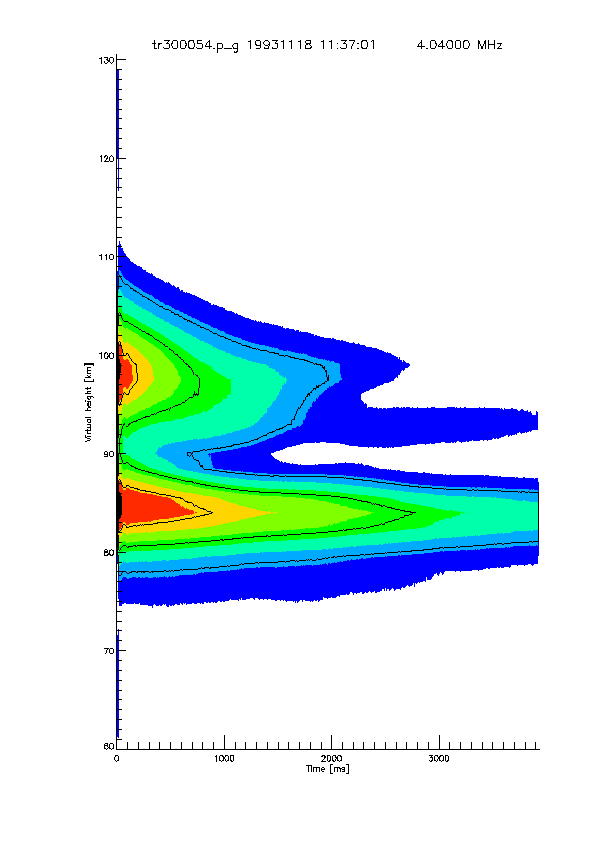
A technique previously used in the former Soviet Union to investigate
the ionosphere was applied to the auroral region for the first time at
Tromsø using the Heating facility and dynasonde. The Artificial
Periodic Irregularity (API) technique uses the standing wave of the heater
reflected from the F-region to produce, by various physical mechanisms
in different height regimes, weak electron density variations which cause
Bragg scattering of other high power HF waves with the same wavelength
probing the region. Many references
exist in the Soviet literature to the physics of the phenomena.
In one type of experiment the heater is switched on for several seconds
to create the irregularities in the D and E regions. Immediately after
heater-off the dynasonde starts sounding at the same frequency as the heater
in a partial-reflection mode to detect the decay of these irregularities
as a function of height and time, using some of the Heating transmitters
as a powerful pulsed transmitter.
The figure below shows a contour plot of how these irregularities from the D-and E-regions decay in amplitude immediately after the heating transmitter is switched off. From the simultaneously measured phase variation as a function of time during this decay, a vertical velocity can be derived which may be interpreted as the vertical neutral wind velocity. The time constant also provides valuable input to models of D-region ion chemistry. The interpretation of data from the API technique is being tested with the help of simultaneous VHF radar data.

A contour plot of the intensity of 4 MHz HF waves Bragg backscattered off Artificial Periodic Irregularities in refractive index as a function of height and time after Heater turn off. The colours show in a linear scale from red to blue, how the intensity decreases as the irregularities decay. The data were taken with the dynasonde receiving system using simple long dipole antennas to detect the 30 us pulses transmitted by the 12 heating transmitters of 90 kW each. In the 4 seconds prior to this plot the heater was on continuously, also at 4 MHz in the X-mode, thereby creating a standing wave pattern by reflection off the F-region. The refractive index fluctuations are caused by variations in electron density induced by the enhanced electron temperature in the standing wave pattern. The physical mechanism is thought to be thermal diffusion and recombination, in the height range depicted here. More recent results show echoes down to about 52 km, a height region not easily accessible by other measurement techniques.